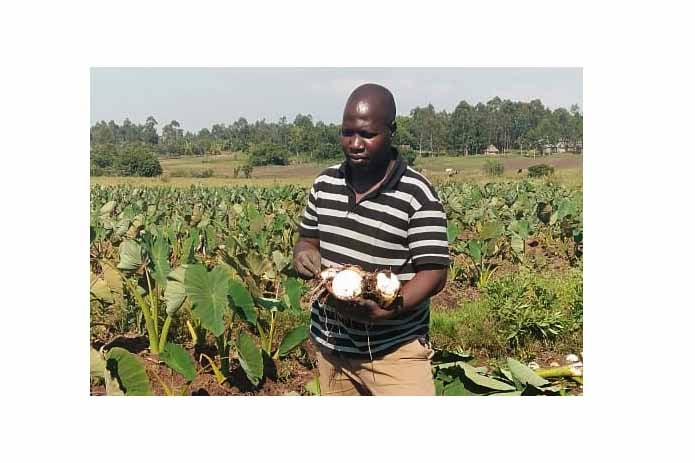Prime
Plant yams this second rainy season

A farmer explains how he harvests yams. Photo/courtesy
What you need to know:
- Arrow roots also known as yams consume a lot of water in their growth cycle and that is why they are commonly found along riverbeds and swampy areas.
Clever farmers have already done an evaluation of the first rainy season of this year, noting the mistakes they made, while celebrating their major successes.
And as you plan to start planting, Seeds of Gold in-house agronomist Elijah Muyoka, advises that you should plan for some short-season crops as well.
Yams
Ugandans are fast embracing health foods and yams also known as arrowroots are becoming a preferred breakfast accompaniment in most urban households.
The tuber crop requires moisturised soils throughout its growth and can take an average of six months to mature, although it is recommended that farmers wait until the 8th month to start harvesting.
This means a farmer who plants his/her crop this month will start harvesting, around February 2024, an opportune time to have money in the bank. One acre of arrowroot can yield up to six tonnes of tubers.
Cultivation
Arrow roots consume a lot of water in their growth cycle and that is why they are commonly found along riverbeds and swampy areas.
However, they can be grown anywhere by planting them in trenches lined with plastic, a technique commonly referred to us upland technology. A heavy duty plastic paper is used to line up the bottom of the trenches, which are then filled with a mixture of soil and manure at a ratio of 2:1.
The Eddoe variety of arrow-roots is recommended for cultivation in trenches and the suckers cost between Sh5 and 15 a piece. A soil pH of 5.5 to 6.5 is favourable. Suckers should be planted at a spacing of 30cm by 30 cm and a depth of 20 cm. The spacing between beds should be 0.5m.
After planting, the beds should be mulched and watered once a week to maintain the moisture.
Management
Arrowroots, once planted do not require a lot of care, apart from the regular removal of old and dry leaves.
All cultivars planted on the same plot of land should be of the same variety– this ensures the entire crop is harvestable at the same time.
Weeding should also be done regularly, but farmers should take care not to step on the beds to avoid compacting.
Poorly sourced stem cuttings can be disease vectors while badly prepared suckers, i.e. those whose tubers and leaves are not precisely cut are more susceptible to disease attacks and rotting as well as being ineffectual propagation material.
To have your arrowroots flourishing and eventually have sizable tubers you will need to stick to a strict schedule.
Weeding will need to be done at least four times before harvest. As arrowroots grow below ground Mukoya warns farmers not to wait until weeds are visible or the planted stem sprouts above ground to weed them out.
While weeding, earthing up should be practiced, burying the growing stem helps spur their growth. Consistent weeding also helps loosen the soil, freeing the tuber and allowing it to enlarge. Compacted soils hinder expansion meaning the plant will focus on maturing. This leads to poorly filled arrowroot tubers. It is as well important to check on the hygiene of your farm.
Fertilisers
Borrowing from experience Mukoya recommends farmers use cowdung or goat droppings for manuring’ this he applies a handful of per hole during planting. “Chicken or pig manure I have found to be more appropriate for growing vegetables, but when applied to arrowroots there is poor bulking of tubers and returns are poor,” he points out.
Arrowroots need sufficient watering and fertile soils. About 30 percent of potential yields are lost if the irrigation levels are insufficient. However, contrary to popular belief, Mukoya says farmers should not grow arrowroots on stagnant water as this often rots tubers.
Starter farmers will need to source for planting stems, an acre requires about 12,000 stems.
Harvesting
Arrow roots are ready for harvesting when the leaves start changing color and withering.
Concerns
Arrowroots, once planted do not require a lot of care, apart from the regular removal of old and dry leaves.




